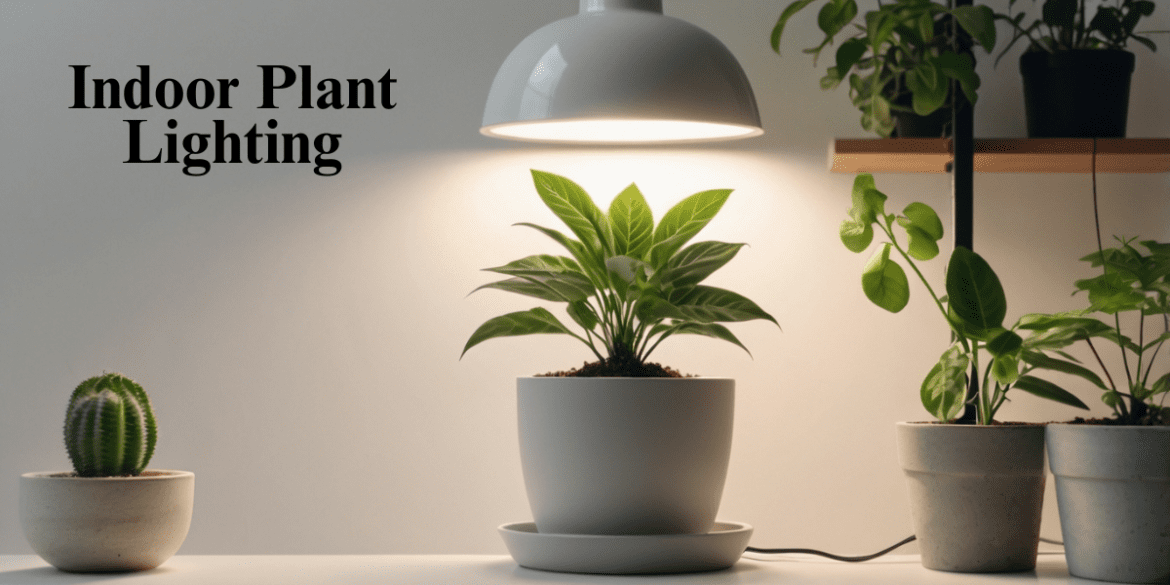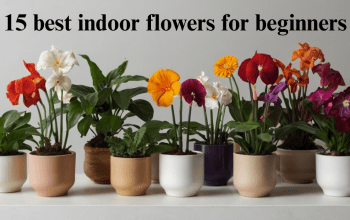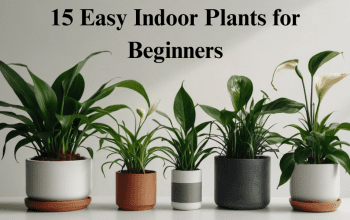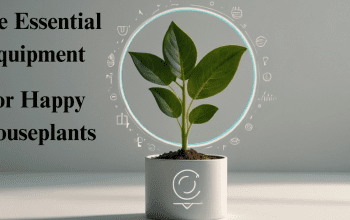Let’s be honest for a second—keeping indoor plants alive feels a bit like raising kids… if kids couldn’t talk, but silently wilted whenever you messed up. You water them, you whisper affirmations (don’t worry, I won’t tell anyone), and still, sometimes they just droop dramatically like they’re auditioning for a soap opera. More often than not, the missing piece isn’t your care or effort—it’s the lighting.
Yes, lighting. The unsung hero of plant parenting. Think about it: plants are basically solar-powered. Sunlight is their morning coffee, their Netflix subscription, and their paycheck rolled into one. Without the right kind of light, your leafy friends can’t photosynthesize properly—which is a fancy word for “making their own food.” In human terms? Imagine trying to survive on vibes alone. Not ideal.
But here’s where things get tricky: not all homes have huge, sunny windows that flood the room with golden rays. Some of us live in apartments with shady corners or kitchens that get about two hours of sun on a good day. That’s where understanding the importance of indoor plant lighting—and more importantly, how and when to use it—comes into play.
The good news? You don’t need to be a botanist or invest in futuristic grow lamps that look like they belong on a spaceship. You just need to know the basics: what type of light your plants crave, how to supplement when nature falls short, and how to avoid common mistakes (like frying your poor fern under a bulb that’s too strong).
So grab your favorite drink, pull up a chair, and let’s break down indoor plant lighting in a way that’s practical, beginner-friendly, and maybe even a little fun. 🌱✨
Photosynthesis 101: The Plant’s Breakfast, Lunch, and Dinner
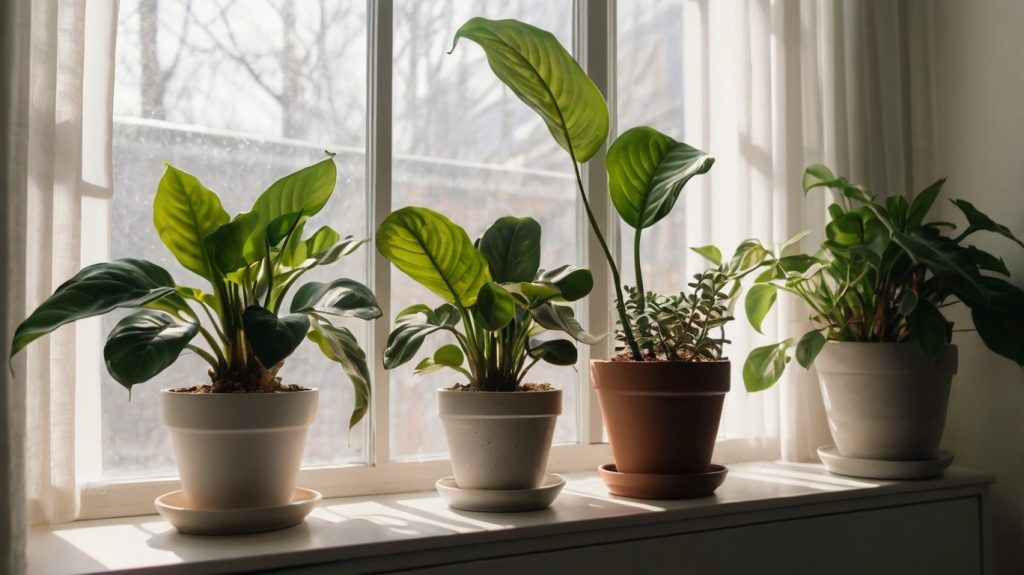
Okay, quick science flashback—but don’t worry, no pop quiz at the end. Remember when your 7th-grade teacher went on and on about photosynthesis? You probably doodled in the margin, but here’s the reality: if you want to keep your plants alive indoors, this word is your golden ticket.
In plain English, photosynthesis is how plants eat. They take in light, water, and carbon dioxide, then whip them together into food (glucose) and release oxygen in the process. Basically, your monstera is a little green chef, turning sunlight into snacks. 🌞+💧+💨 = 🍴.
Here’s the kicker: without enough light, this entire process slows down. Too little light and your plant is basically on a juice cleanse it never asked for—skinny stems, droopy leaves, slow growth. Too much light, on the other hand, is like overloading on caffeine—burnt leaves, stressed roots, plant meltdown. That’s why understanding the kind of light your indoor garden gets is just as important as watering or soil.
Direct Light: The Plant’s Sunbath
When we say “direct light,” we mean sunlight that beams straight onto the plant without anything in the way—no curtains, no blinds, no shade. Think of it like laying on the beach without sunscreen. Some plants (like cacti, succulents, and rosemary) love this. They thrive on long hours of intense rays and practically wave at the sun saying, “Hit me harder!”
But here’s the warning label: not all plants are built for the sun spa. Put a peace lily in direct light for a week and you’ll end up with crispy leaves that look like potato chips. 🌿➡🔥 So, before placing your plant in that sunny window, know its personality. Desert natives? Go for it. Tropical shade-lovers? Hard pass.
Pro tip: South-facing windows are usually your direct-light jackpot, but if the sun gets too strong, you can always soften it with a sheer curtain. Think of it as SPF for your plants.
Bright Indirect Light: The Plant’s Favorite Latte Spot
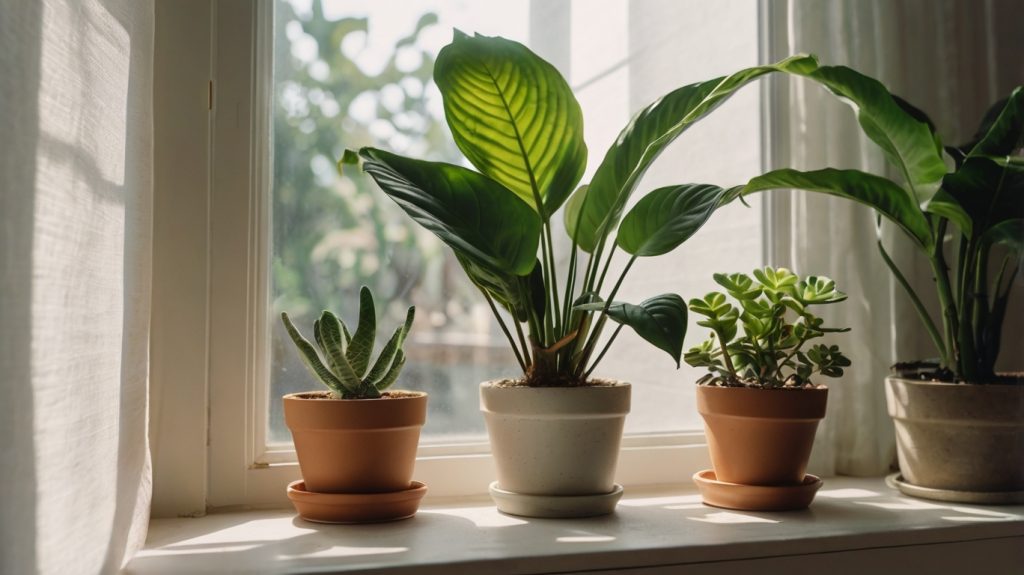
Here’s the indoor gardener‘s magic phrase: bright indirect light. It’s the sweet spot, the “just right” porridge of the plant world. Your plant gets plenty of light, but it’s diffused—like sitting by a sunny café window instead of roasting on the patio.
Most popular houseplants (snake plants, pothos, philodendrons, herbs) adore this setup. They get all the photons they need for photosynthesis without the risk of leaf burn. It’s like treating them to a daily latte: cozy, energizing, and not overwhelming.
So how do you know if you’ve nailed “bright indirect light”? Stand near the spot around midday. If you can comfortably read a book without squinting and the sun isn’t hitting your skin like a laser beam, congrats—you’ve found it. East-facing windows usually give this kind of light in the morning, while south and west windows can be perfect if you filter the light with sheer curtains.
In short: if direct light is the sunbather, bright indirect is the hipster with an oat milk latte—relaxed, happy, thriving. 🌱☕
Medium Indirect Light: The Middle Child of Lighting
If direct light is the sun-worshipper and bright indirect is the café-loving hipster, then medium indirect light is the middle child—sometimes overlooked, but oh-so-important. Plants in this category don’t want to be blasted by sun rays, but they also don’t want to sit in the shadowy corner of your living room looking like they’re in plant prison.
Medium indirect light usually means your plant is a few feet away from a bright window. They’re getting a steady dose of light, but it’s softened—like listening to your favorite playlist at a medium volume instead of blasting it through the neighbor’s wall.
So, which plants vibe here? Ferns, calatheas, peperomias, and some philodendrons. These plants enjoy a consistent but gentle light that won’t scorch their delicate leaves. Think of them as the introverts of the plant kingdom: they want attention, but please, not too much.
One practical way to test? Hold your hand up between the plant and the light source. If you see a soft shadow (not sharp, not disappearing), you’ve nailed medium indirect.
Bottom line: medium indirect light is perfect for those cozy nooks in your home where it’s bright, but the sun isn’t crashing in like a spotlight. Your plants will thank you with lush, steady growth instead of tantrums.
Low Light: Plants That Survive in the “Shady Business”
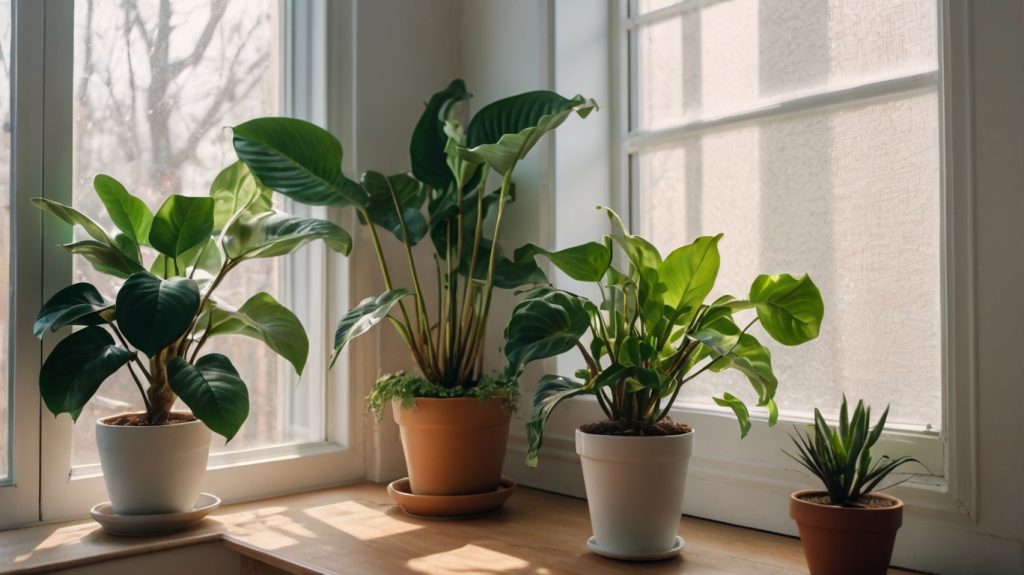
Let’s clear this up once and for all: low light doesn’t mean no light. A plant shoved in a dark closet will not “thrive” no matter how many pep talks you give it. Plants are living, breathing organisms—they need photons (light particles) to function. That said, some plants are total champs at tolerating low-light conditions.
Low light typically means spots where your room gets daylight but never direct sunbeams. Hallways, bathrooms with small windows, or the corner of your office. In human terms, it’s like working under office fluorescents—unexciting, but it gets the job done.
Snake plants, ZZ plants, pothos, and cast iron plants are the rockstars here. They’re basically the “I’ll eat whatever’s in the fridge” kind of houseguests—flexible, chill, and unlikely to complain.
The trick? Don’t confuse “surviving” with “thriving.” In low light, plants grow slower, produce fewer leaves, and sometimes stretch toward the nearest light source like they’re auditioning for a yoga class. That’s normal. If you want them to flourish, consider rotating them occasionally into brighter spots or supplementing with a grow light.
So, yes, low-light plants exist—but think of them as the bare minimum option. If you want dramatic growth, blooms, or Insta-worthy jungles, you’ll need more light power. 🌿✨
Window Direction Matters: Your Home’s Secret Lighting Blueprint
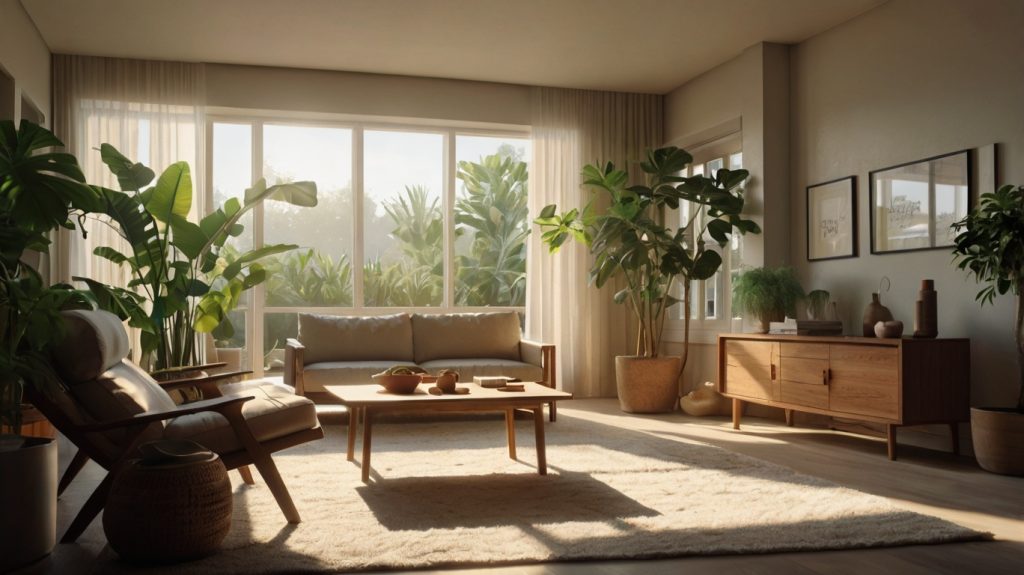
You might think all windows are created equal. Spoiler: they’re not. The direction your windows face is like your home’s built-in lighting chart, and plants notice every detail.
- North-facing windows: The moody poets of the bunch. They never get direct sunlight, just soft, cool light all day. Perfect for ferns, pothos, and low-light lovers. Don’t expect succulents to be happy here—they’ll sulk.
- East-facing windows: Morning sunshine magic! Gentle, not too hot, and full of happy vibes. Herbs, philodendrons, and most flowering plants adore this spot. It’s like breakfast in bed for your plants.
- South-facing windows: The jackpot for light-hungry plants. These spots get the most sun throughout the day. Succulents, cacti, citrus plants—bring them here, and they’ll thrive like it’s summer all year. Just be careful of scorching in midsummer—throw up a sheer curtain if needed.
- West-facing windows: The drama queens. Afternoon sun pours in strong and hot, which can be intense. Good for sun-loving plants, but tropicals may complain about the heat.
Knowing your window’s direction is like reading the “fine print” on your home’s natural lighting contract. Once you map it out, you’ll know exactly which plant belongs where.
So next time you’re tempted to shove your new fiddle leaf fig anywhere that looks “aesthetic,” pause. Check your window’s direction first—because plants care less about your décor goals and more about where the light hits.
When to Consider a Grow Light
Here’s the hard truth: not all of us live in bright, airy lofts with sun-drenched windows and perfect Instagram vibes. Some of us live in basements, city apartments wedged between skyscrapers, or houses where the only sunlight seems to hit the neighbor’s wall (rude). If you’ve ever caught yourself apologizing to your plant for the lack of sunshine, it’s officially time to consider a grow light.
So, when exactly should you make the leap?
- Your plants are stretching like yoga instructors. If your pothos looks like it’s reaching for the ceiling fan, that’s “etiolation”—the plant’s way of saying, Hey, I’m starving for light over here. A grow light can stop the stretch and encourage fuller, bushier growth.
- Winter blues. Even if your space gets great light in summer, those gloomy winter months can leave plants sluggish and sad. A grow light acts like a vitamin D lamp for your green buddies, keeping them photosynthesizing when the sun’s on vacation.
- Wrong windows, wrong vibes. Got only north-facing windows? Or your place is surrounded by tall buildings or shady trees? That’s a recipe for plant drama. A grow light can level the playing field.
- You’re growing veggies or herbs indoors. Leafy greens, tomatoes, and herbs are light hogs. Unless you want parsley that looks like it’s on a crash diet, supplemental light is non-negotiable.
- You’re a collector. Some plants (like succulents or citrus trees) simply demand more light than the average windowsill can provide. A grow light ensures they don’t shrivel up and ghost you.
The takeaway? Grow lights aren’t just for plant nerds or people who want to cosplay as botanists. They’re a practical, affordable solution that helps your plants thrive year-round, no matter where you live. Think of them as Netflix for your plants: once you try it, you wonder how you ever lived without it.
Final Thoughts: Let There Be Light (Literally)
If there’s one thing we’ve uncovered in this little plant-light adventure, it’s that your leafy friends aren’t as complicated as they sometimes look. They don’t need spa days, crystals, or whispered affirmations (though hey, if that makes you feel good, keep whispering). What they do need is light—their food, fuel, and life source.
We started with Photosynthesis 101, where we learned that plants are basically solar-powered beings. Then we navigated the spectrum of light: from sun-worshipping succulents in direct light to the easygoing pothos chilling happily in low-light corners. We even peeked into the mysterious world of window directions (because yes, apparently, the compass on your phone matters when you’re playing plant-parent).
The golden rule here? Match the plant to the light, not the other way around. Don’t force your fiddle leaf fig into a dark bathroom just because it “looks aesthetic” there. Trust me, it’ll stage a dramatic protest.
And when Mother Nature just doesn’t cooperate? That’s where our trusty backup dancer—the grow light—steps onto the stage. If your plants are stretching, sulking in winter, or you’re trying to grow basil in a windowless kitchen, it’s time to flip that switch. Grow lights aren’t a sign you’ve “failed” at natural light; they’re a sign you’re serious about helping your plants thrive.
Now, let’s keep this real for a second: you don’t need to transform your home into a futuristic jungle glowing with purple LEDs. Start small. Maybe one grow bulb over your herb garden or a slim bar light above your desk plant. Watch how your green pals respond. Spoiler: the change is usually dramatic—in the best way.
And here’s the fun part: once you figure out your home’s light situation, indoor gardening becomes a whole new experience. Plants stop being “guesswork” and start being partners. Your monstera rewards you with new leaves, your herbs taste fresher, and your succulents stop stretching like they’re auditioning for Cirque du Soleil.
So the next time you catch yourself wondering why your fern looks moody or your basil seems to be on a hunger strike, remember this: it’s not you, it’s the light. And the fix? Easier than you think.
Your home already has a secret lighting blueprint—you just have to learn how to read it. Once you do, you’ll stop fighting your plants and start working with them.
In short: give your plants the right kind of light, and they’ll give you back so much more. Cleaner air, reduced stress, a pop of green happiness, and—let’s be honest—some seriously Instagram-worthy vibes. 🌿✨
So go ahead. Pull out the compass, eye those windows, and maybe grab a grow light if your space needs a boost. Because when it comes to indoor gardening, it’s not just about keeping plants alive—it’s about creating a thriving little ecosystem in your own home.
And who knows? With the right light, you might just discover that your indoor jungle is the best roommate you’ve ever had—quiet, pretty, and (mostly) drama-free.
FAQs
Most indoor plants thrive on bright, indirect light—sunlight that’s filtered or bounced around instead of hitting them directly like a spotlight. Think of it as the plant equivalent of sitting near a sunny window with sheer curtains. Too much harsh sun and leaves can scorch; too little light and they’ll stretch or sulk.
Yes! Plants don’t care whether photons come from the sun or a bulb—as long as they get the right spectrum. Full-spectrum grow lights mimic natural sunlight, giving plants what they need for photosynthesis. So, even if you live in a basement or gloomy apartment, you can keep a jungle alive under artificial light.
Direct light = sunlight hits the plant straight on (like a front-row concert ticket). Great for succulents, cacti, or citrus trees.
Indirect light = light that’s softened or filtered before reaching the plant (like sitting back in the balcony seats). Perfect for ferns, pothos, and philodendrons.
High light: 6+ hours of direct sun (succulents, cacti).
Medium light: 3–6 hours of bright indirect light (philodendrons, ferns).
Low light: tolerate shade, but still need some indirect light (snake plants, ZZ plants).
Remember: “low light” doesn’t mean no light—plants won’t survive in complete darkness.
Absolutely. Window direction is like your home’s light personality:
North = cool, low light (great for shade-loving plants).
East = soft morning sun (perfect for herbs and tropicals).
South = sun all day (best for high-light plants).
West = hot afternoon sun (good for sun-lovers, but watch for leaf burn).
Grow lights are artificial lights designed to mimic the sun. The main types:
LEDs: energy-efficient, long-lasting, full-spectrum.
Fluorescent: affordable, great for beginners.
Incandescent: cheap, but too hot and not plant-friendly.
The best choice? LED grow lights—they give plants the light they crave without hiking up your electric bill.
It depends on the bulb’s strength, but a safe rule: 6–12 inches away for small plants, and 12–24 inches for larger ones. Too close and you risk frying leaves, too far and plants get weak light. Watch the leaves: yellowing or burning means move the light back, stretching means move it closer.
Most houseplants love 12–16 hours of light per day, especially under artificial lights. But give them at least 6–8 hours of “night” (darkness) so they can rest. Just like humans, plants don’t want the lights on 24/7—they need downtime too.
Yep. Too much light = scorched, crispy leaves. Too little light = leggy, weak growth. And the wrong spectrum (like a regular desk lamp) might keep plants alive but won’t help them thrive. Think of it as feeding your plants junk food: they won’t die, but they won’t be their best selves either.
Use grow lights when:
Your space doesn’t get enough natural sunlight.
It’s winter and daylight hours are short.
You’re growing veggies, herbs, or light-hungry plants indoors.
Your plants are showing signs of light starvation (stretching, pale leaves).
Basically, anytime Mother Nature isn’t delivering the goods, a grow light can save the day.
